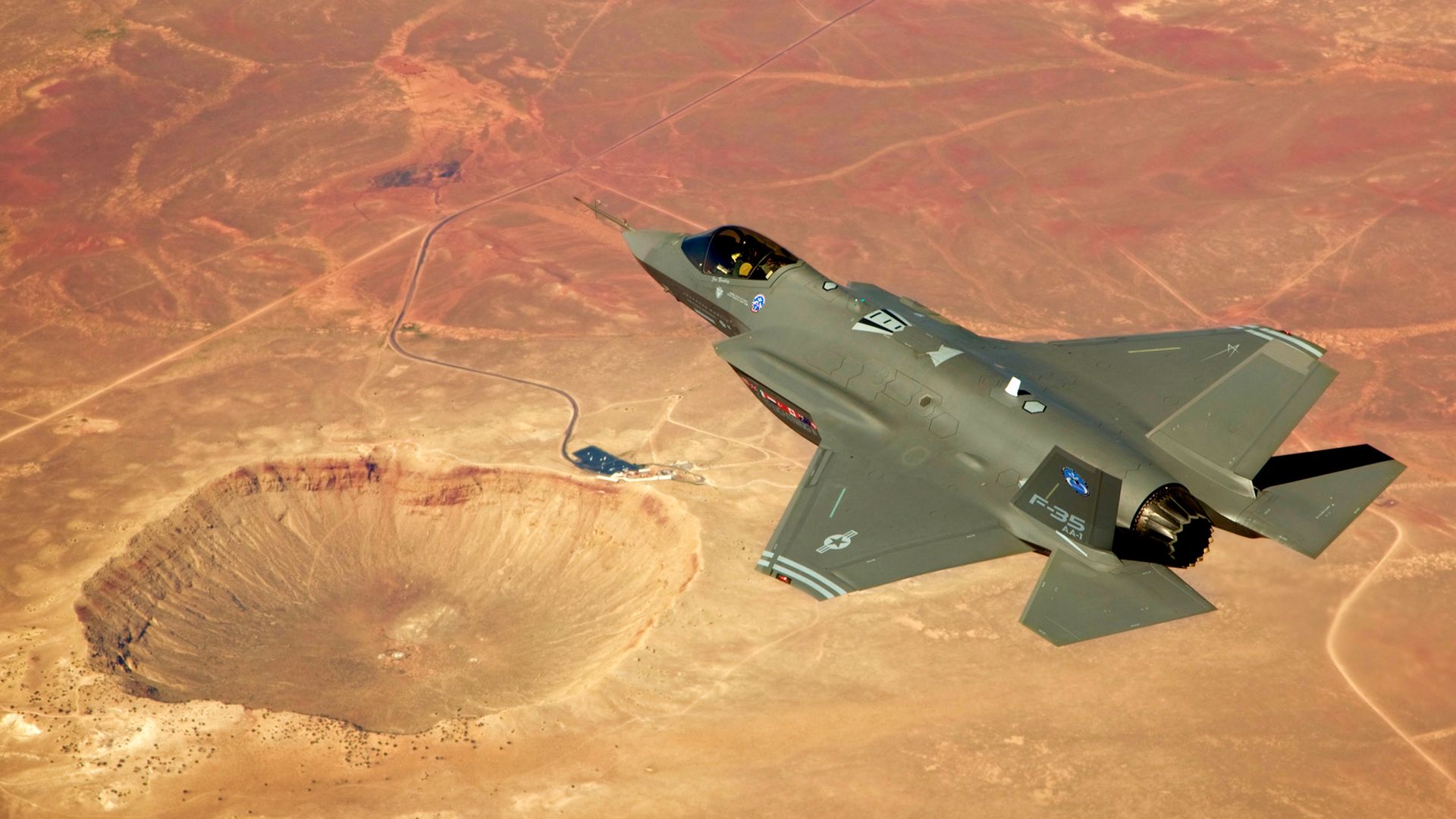Russian Su-34 and Su-35 fighters in Syria detected a radar tracking from US Air Force (USAF) F-35s that led to the former’s “on board” defense systems being “activated” last week, according to a top Russian military officer based in the war-torn country.
Russia Unveils ‘Electronic Defense System’ To Defend Its Tanks From Ukraine’s ‘Deadly’ FPV Drones
This was again followed by what Russian authorities described as “two F-35s buzzing dangerously close” to two Su-35 fighters over Syria on August 14, which could have “caused a collision.”
The incident comes after repeated face-offs between Russian and American military aircraft over Syrian skies as the country and the region find themselves in another brewing conflict. President Basher al-Assad remains in the US crosshairs and under severe sanctions over human rights violations in the ten-year-old civil war.
Moscow and Tehran have also long accused the US of often supporting the IS and Al Qaeda-linked groups against the Syrian government. The last allegation of US and IS collusion came from Sergey Naryshkin, the chief of Russia’s foreign intelligence agency, Sluzhba vneshney razvedki Rossiyskoy Federatsii (SVR).
Naryshkin, in May, accused Washington of training Daesh fighters at its Al-Tanf base in Syria’s southwest, bordering Iraq and Jordan.
F-35s ‘Paint’ Su-35 & Su-34?
According to a report in Russian state media, two Su-34 and two Su-35 aircraft of the Russian Air Force (RuAF or the VKS) “recorded the impact on them of the guidance and radar systems of two F-35 fighters of the anti-terrorist coalition led by the United States.”
This “automatically (activated) the onboard defense systems of Russian aircraft,” Rear Admiral Vadim Kulit, deputy head of the Russian Center for the Reconciliation of Warring Parties (CPVS) in Syria, said.
This happened between “02:13 to 02:20” when the Su-34 and two Su-35 were undertaking a “planned flight in the Al-Tanf area” when they were “subjected to radar attacks from two F-35 fighters” that eventually triggered the Sukhoi jets’ “automatic operation of onboard defense systems.”

Kulit slammed the USAF actions, saying these “create the prerequisites for aviation incidents and exacerbate the situation in the airspace of the Arab Republic.”
Kulit also accused “fighters and unmanned aerial vehicles of the pro-American anti-terrorist coalition” of violating the Syrian Arab Republic’s (SAR) airspace “16 times” over the previous day, over an area which coincided with many “international air routes.” “Coalition drones violated deconfliction protocols 11 times a day, thereby continuing to create dangerous situations in the skies of Syria.”
What It Means
The claimed actions by the F-35s essentially mean the stealth jets were trying to track the Russian fighters, which the latter’s sensors must have detected. Advanced fighters have Radar Warning Receivers (RWR) that trigger an alarm when radar waves from enemy fighters hit them.
It is unclear if the F-35 used ‘active’ radar tracking since that may have also given away their positions. The Su-35 could have triangulated this using its highly advanced wingtip-mounted L175M Khbiniy Electronic Countermeasures (ECM) pods.
The F-35, despite its recurring technical snags owing to unresolved issues with the industrial and manufacturing network the US relies on, is an immensely advanced sensor-fused fighter with exceptionally powerful electronic, optical reconnaissance, and data-linking capabilities.
Naturally, the F-35 pilots would not try to actively target and attack the Russian jets knowing the diplomatic fallouts and the ensuing military escalation – possibly across regions.
A separate TASS report specified the two F-35’s technical actions as “aiming and radiolocation systems from the anti-terrorist coalition.” This indicates that stealth fighters employed their Electronic Intelligence (ELINT) systems to track enemy radio communications.
The “aiming” could be a part of a step to cue onboard air-to-air missiles (AAM) with radar tracking, which must not have been meant to follow through with the firing but to signal deterrence to the Russian fighters. What evasive action the Su-34 and the Su-35 took is unclear. But it can be assumed to be a response to an MQ-9 Reaper drone that was damaged by a flare fired by a Russian fighter over Syria late in June.
In the incident on August 14, “between 12:35 and 12:50 (Moscow time), two F-35 fighter jets of the coalition dangerously approached two Su-35 planes of the Russian Aerospace forces at the altitude of about 9,100 meters, in the Al Tanf zone.
“The Russian aircraft were performing a scheduled flight along Syria’s southern border,” Kulit was quoted in a TASS report. “Russian pilots demonstrated a high degree of professionalism, promptly taking the necessary measures to avert a collision with the coalition’s aircraft,” he added.
- The author can be reached at satamp (at) gmail.com
- Follow EurAsian Times on Google News